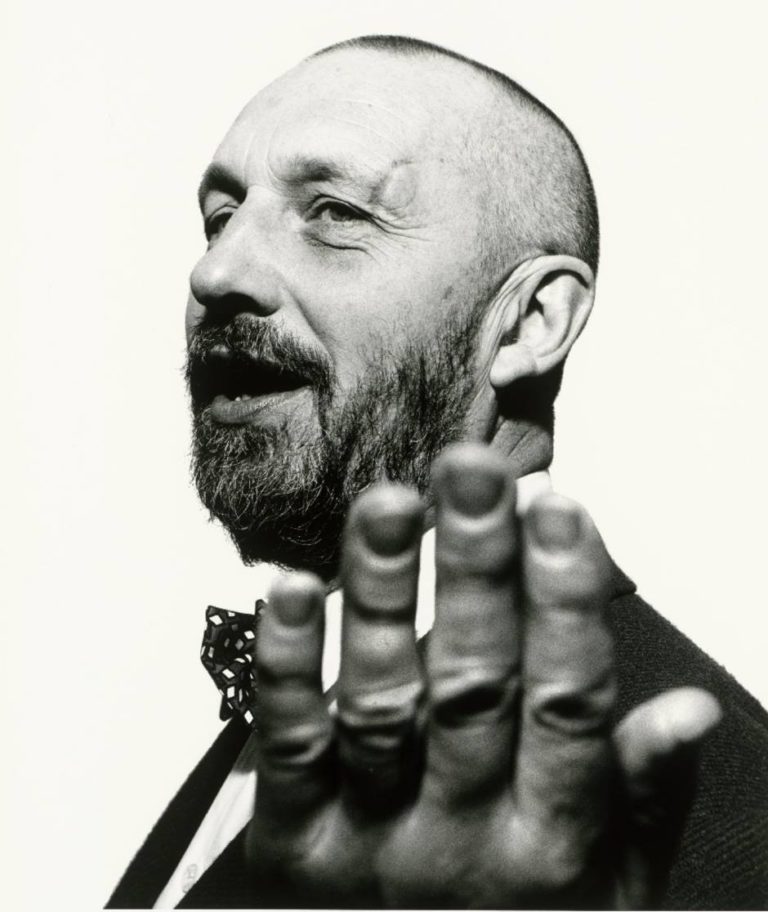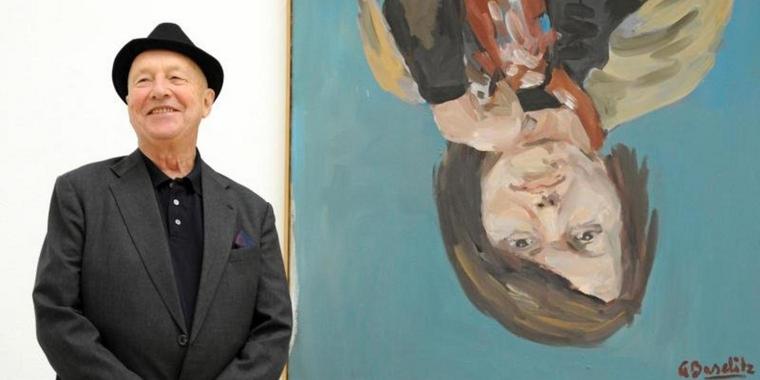
1938
Georg Baselitz

description
A German Neo-expressionist artist and avant-garde sculptor, one of the founders of the New Wild group. The real name of the artist is Kern, and he took the pseudonym from the name of his native town of Deutschbazelitz, located near Dresden.
The artist’s “calling card”, which makes his paintings instantly recognizable, is human figures located upside down on the canvas. Georg Baselitz began depicting people in this way around 1969.
The uncompromising and rebellious spirit of the future famous artist led to the fact that Georg Baselitz was expelled from the art school; his works “What a night fell” and “Naked Man” were banned as obscene, and seized by the police during his first exhibition.
Forced to work in the official style of socialist realism while living in East Berlin, the artist switched to abstract art after moving to the western part of the city. Gradually, Baselitz rejected both movements and began to revive German Expressionism, which flourished before the war but was objectionable to the Nazi government. The human figure took the central place in the work of Baselitz, and the paintings became scandalous and defiant.
Georg Baselitz played a key role in the development of German art after the Second World War, expressing national identity with the help of symbolic and expressive images.
The artist’s works were often criticized because of their repulsive and unaesthetic content; however, at the same time, they inspired a lot of European and American artists, contributing to the revival of figurative art.
Today, Georg Baselitz is an internationally recognized artist whose work is one of the most expensive works of contemporary painters and sculptors. He continues to work tirelessly, creating a kind of “remake” of his compositions of past years.
Key ideas:
– Georg Baselitz did not try to make his paintings attractive and beautiful. To renew his contemporaries’ opinion about painting, he used the “aesthetic shock”, using repulsive and evocative images in his works. The disharmony of composition, expression, clashing colours and lines of criticism were called “bad painting”, and Baselitz was called “the best representative of bad painting”.
– Baselitz contrasted emotionally expressive images, furious strokes of paint, deliberate negligence, rudeness and incompleteness of work with strict lines and coldness of abstraction. Working on the canvases, Baselitz spread them on the floor, as Jackson Pollock did, and created the image with quick and energetic strokes of a wide brush.
– The artist’s style has much in common with urban street painting, graffiti art, which involves spontaneity and utmost expression. At the same time, the painting of Baselitz has national German images and motifs that take their roots from an earlier folk tradition. Lumberjacks, birds and winter forests often appear in his paintings.
– An original feature of the artist’s paintings is images turned upside down; this makes the viewer take a fresh look at the object and method of creating a work of art. Many contemporaries of the artist considered this method only a trick that attracted the attention of the public, but Baselitz wanted to show the secondary nature of the depicted object and the importance of the emotional filling of the canvas.
– Georg Baselitz created his first wooden sculpture secretly from everyone in the late 1970s. He drew inspiration for his compositions from African folk art and created powerful and expressive images in tune with the heroes of his paintings. The most famous sculpture of Baselitz is “Women of Dresden”, which symbolizes the fear and despair of people during the Second World War.
1938
1956
1957
1958
1961
1963
1965
1969
1975
1979
1980
1989
1990
1995
Was born as Hans-Georg Kern
He began to study at the School of Fine Arts in East Berlin

Was expelled from school due to his "socio-political immaturity"

Changed his name to Baselitz

Pandemonium-1

The first solo exhibition

Won a scholarship to study in Florence for one year

First used his famous “inverted image” technique

Moved to Derneburg

Started to create sculptural compositions

Presented his work “Model for sculpture”

He was awarded the "Cavalier of the Order of Literature and Art"

His first major solo exhibition in East Germany

The exhibitions of the artist in the United States

Georg Baselitz
On Artist
flow
Expressionism
Action painting
Primitivism
Ar brut
friends
Eugen Schenebe
artists
Vasily Kandinsky
Kazimir Malevich
Ernst Ludwig Kirchner
Jean Dubuffet
Edward Munch
Jackson Pollock
Philip Guston
By Artist
flow
Neo-expressionism
friends
Eugen Schenebeck
artists
Julian Schnabel
Jean-Michel Basquiat
